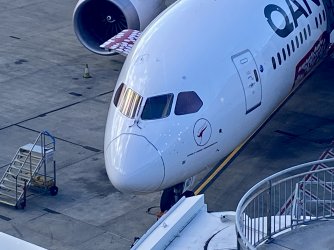AviatorInsight
Established Member
- Joined
- Oct 5, 2016
- Posts
- 1,396
He sounds exactly like I was (and still am!). I'll do my best to give you a rundown of how to get into the industry as best I can.Good evening, I would appreciate the thoughts of the pilots in the community about entry pathways into this career.
My 16 year old son has wanted to be a commercial airline pilot since he could talk. His entire life revolves around aviation and always has done.
As far as subjects go, physics and maths should be staples for years 11 and 12. The maths component doesn't need to be 4 unit or even 3 unit. But just something above general or social maths (not sure what state you're in).At the moment he is choosing subject ms for year 11 and 12 and discussions have become more focused on what sort of entry pathway he should be aiming for; does he complete a Bachelor of Aviation, or should he put his energy into trying to get a Cadetship with an Australian or UK airline (he has dual citizenship). Given the (apparent?) shortage of pilots, it seems that, if he’s able to get one, a Cadetship might be an effective way of getting him where he wants to be.
Honestly, a bachelor of aviation will have no effect on him getting into an airline. I joined two airlines without a degree, and it wasn't until after I joined, that I decided to do an aviation management degree, which didn't really help me during Covid.
If he wants to fly, then I would focus on the flying part. Cadetships are good if you can get into them but he will need to be prepared to sit as a first officer for a considerable amount of time to gain his experience.
In Australia, most cadetships are paid for by the student (or from the bank of mum and dad). While they are highly competitive, don't discount the valuable lessons he will learn through general aviation (or the military). I tried cadetships for a number of different airlines (unsuccessfully), and the military told me I couldn't be a pilot with glasses (this was in the early 2000s, but it has since changed its rules). So I went through the general aviation route and eventually found my way into the airlines.
This is good. It's exactly how I started too. I started flying in the Air Force Cadets at 15 during the school holidays. I went first Solo just after my 16th birthday and still needed my parents to drop me off to the airport because I couldn't drive a car yet.He’s doing everything we can think of to make himself a strong candidate in the future: Airforce Cadets, Leadership training, Duke of Edinburgh etc
I got to the rank of Cadet Under Officer and found the leadership training developed me as a teenager and gave me a lot of confidence going into full time flying training. I also got my gold in the Duke of Edinburgh, and found all of my time and experience in the Air Force Cadets led to it being a focus point in every interview I attended.
I managed to get a scholarship from the local RAAF Association to pay for my flying training up to a restricted pilot licence (something my parents were grateful for!). The opportunities that presented themselves simply by being in the AAFC is something I can't fault.
This is a loaded question. I believe there is no shortage of pilots, but there is a shortage of experienced pilots. The problem airlines are facing now is that they are falling short of their experienced candidates, so what do they do? They just lower the minimum entry requirements. All of a sudden, your "shortage" is no longer an issue. They have been doing this for decades. It is now the easiest it has been to join a major airline.I’d love advice on what pathway you would pursue if you were starting out at this point in time (which if you believe the media is that there is a pilot shortage). Also, is there anything else he could be doing to increase his chance of reaching his goal?
One airline in particular, is struggling to find eligible captains to upgrade because they don't have the required company minimums (a lot have joined as cadets or with very low hours). So they may be forced to hire direct entry captains who will bypass those already in the company.
So it is a bit of a double edged sword. In an airline, seniority is everything. Most try and get in as early as they can to capitalise on the benefits of seniority later on. On the other hand, all of their experience will be in an airline environment (not necessarily a bad thing), but something I have truly benefited from was having a decent amount of experience cutting my teeth before joining the majors. But of course, everyone is different.
In terms of what he could do to increase his chances, my advice is to never give up and that there is more than one way to get a foot in the door.
Oh, and if Covid has taught me anything, it's that our skills aren't easily transferable. Getting a trade or something else to fall back on is something I should have done earlier in my career.
Best of luck!















